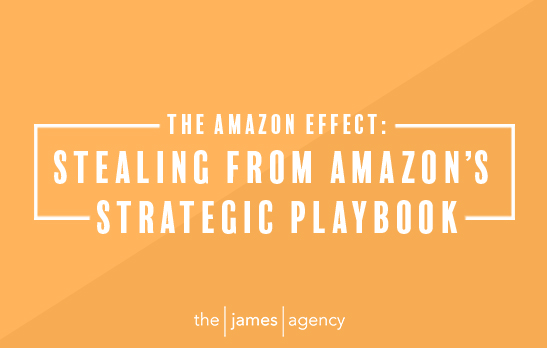Ahh…. the Amazon story. One of my favorite iterations of David and Goliath. The unstoppable Amazon strangling mom and pop shops while simultaneously disrupting big-box mainstays and obliterating everything in between. It’s an easy story to retell.
The part everyone forgets is that just 22 years ago Amazon was founded as a scrappy little eCommerce platform focused on selling books and only books.
“Earth’s biggest bookstore.”
In 1995, Amazon had just three employees. Shel Kaphan, MacKenzie Bezos and their relentless leader, Jeff Bezos. Working out of the Bezos family garage and facing bankruptcy, they had one choice – innovate or die.
Innovate they did.
Fast forward 22 years and Amazon is valued at $430 billion, racing Apple and Google to be the first $1-trillion company in the world.
In this post we’ll take a look at some of Amazon and Mr. Bezos’ most strategic moves on their meteoric rise to becoming one of the highest valued companies on the planet in just over two decades.
Don’t Attack Your Enemies Strengths
Let’s revisit that story of David and Goliath.
David, the lowly Isre alite equipped with nothing but a sling, volunteering for “single combat” against 6’9” Philistine warrior, Goliath, equipped with a sword, spear and clad in heavy armor.
alite equipped with nothing but a sling, volunteering for “single combat” against 6’9” Philistine warrior, Goliath, equipped with a sword, spear and clad in heavy armor.
It sounds like David had a death wish, right?
What we know today – the truth about Goliath – is Goliath couldn’t see. He suffered from acromegaly. A condition which resulted in his extreme height, along with double-vision and extreme nearsightedness.
David knew Goliath’s size, plus the weight of his steel armor, meant Goliath was at an extreme disadvantage in terms of mobility. David knew Goliath’s sword and spear were deadly, but only if Goliath could get close enough – which he couldn’t.
Knowing this, David selected the counter to Goliath’s strength – the sling. Today’s calculations measure David’s sling with stopping power equivalent to a modern .45 caliber gun.
David walked right up to Goliath – but far enough away that Goliath’s sword was useless – and killed Goliath with a single shot to the head.
The more accurate retelling of David and Goliath is much like early Amazon. Amazon’s competitors (Barnes & Noble and Borders) had extreme size and power. Amazon identified a weakness in their scalability rooted in the fact that they had to continually build more stores to reach more customers.
Amazon exploited this weakness by deciding to operate solely online – where their competition was slow to adapt. In doing so Amazon was able to move more quickly, adapting to consumer trends, shopping habits and behaviors.
It also gave Amazon a near-infinite scale in terms of potential customers.
The question they asked (and answered) is, “What can’t our competitors do?” Then they did it.
Know Your Enemy and Know Yourself
In 1995, shortly after launching Amazon out of the garage of founder Jeff Bezos, he, his wife and their third employee decided to hold all of their meetings in a nearby Barnes & Noble. These meetings weren’t just to get out of the garage to discuss Amazon matters. These meetings had a clear goal to observe Barnes & Noble and their customers.
How are customers navigating the store? What books are people buying? What questions are they asking staff members? Where is the friction? How could they make this a customer-centric experience?
By 1996, Jeff Bezos had taken this so seriously that, as a relative unknown, he was able to get a dinner with the owners of Barnes & Noble. Originally presented as a possible mentorship, Bezos was secretly looking for inside information on Barnes & Noble’s plan for the future.
While the owners of Barnes & Noble were courteous enough to let Mr. Bezos know they “admired” what he was doing, they also let him know they were about to take their book sales online as well, hoping to “crush Amazon.” The name? Of course you don’t know, but it was called “Book Predator.”
Using this same tactic in 2001, Bezos had a meeting with Borders’ ownership. Bezos discovered Borders – with 1,200 brick and mortar stores – had no plans to grow their online bookselling business.
What did Jeff Bezos propose?
“Just forward that borders.com URL to amazon.com for a very, very small royalty and don’t worry about that internet fad, Mr. Borders.”
The rest is history.
To paraphrase Sun Tzu, “Know your enemy and know yourself and you can fight a hundred battles without disaster.”
Small Teams Work Faster Than Large Ones
Goliath – a recurring theme in this post – was known and feared for his size and strength. The very thing David exploited to kill him.
 Now think about this in terms of your career. When was the last time you were part of a large team trying to solve a problem? How productive was it? Did the group suffer from the “someone else will do it” mentality? Was the idea watered down because everyone needed to agree on what the finished product should look like? Did you get in each others way when you actually tried to get something done?
Now think about this in terms of your career. When was the last time you were part of a large team trying to solve a problem? How productive was it? Did the group suffer from the “someone else will do it” mentality? Was the idea watered down because everyone needed to agree on what the finished product should look like? Did you get in each others way when you actually tried to get something done?
While most teams focus on increased communication, Jeff Bezos saw communication as a scalability problem. As a team grows, more communication is necessary, which slows down productivity and innovation.
“Communication is a sign of dysfunction,” Bezos said.
Bezos sought to reduce communication by implementing what became known as Two Pizza Teams. The idea that a team should never be larger than two pizzas can feed (roughly ten people). Anything larger, and too much communication is needed. Small teams work more closely and communication happens organically.
Since the smaller teams were forced to set strict goals to measure their success, each individual was held to a higher standard, eliminating the “someone else will do it” mindset that plagues large teams.
So next time, ask yourself, how many people need to be in that meeting? How many people actually need to touch and influence the outcome of that project? Is your team using projects to satisfy egos or make every member feel involved?
Eliminate forced communication by working in smaller, higher-performing teams to maximize efficiency while limiting dysfunction.
It Takes a Relentless Leader with a Vivid Vision
Jeff Bezos, much like Steve Jobs, is known for his explosive personality. So much so that it’s rumored that he hired a leadership coach to keep his outbursts in check.
His work ethic is absolutely relentless (see where relentless.com takes you…) and his vision of the future is extraordinarily accurate.
Look at it this way, Jeff Bezos saw online and eCommerce – both in their infancy – as the new be-all-end-all to the customer shopping experience. He saw this at a time when internet adoption rates, let alone online shopping numbers, were close to single-digit percentages.
Why weren’t his competitors, all much better positioned to capitalize on this, able to see the same opportunity and strike from a position of power?
In 2006, Bezos saw cloud-computing as the future and launched Amazon Web Services, which as of 2017, powers 2,000 government agencies, 5,000 education institutions, 17,500 non-profits and hundreds of thousands (if not millions) of businesses. Why didn’t the traditional technology companies own this market?
Remember, Amazon was a bookseller, and then just an eCommerce marketplace.
In more recent memory, think about one-hour delivery. Can you imagine USPS trying to tackle that, let alone drone delivery?
Today Jeff Bezos is actively working on how Amazon will handle deliveries to the moon and Mars. A problem NASA isn’t even working on.
Actively working to solve a problem that won’t truly be a problem for another five to ten years has positioned Amazon to continually beat industry mainstays on their home courts and at their own expertise.
The lesson here is if you are planning to be a company in 2020 or 2030 – start acting like it today.
Innovating Your Way To Success
In an age where anyone with a powerpoint and an idea can get six-figure Series-A funding, it’s easy to forget that some of today’s largest companies came from absolutely nothing but a position of strategic innovation.
It’s important to remember that Amazon didn’t put anyone out of business. Technology and innovation put those companies out of business. This, plus a vivid vision of the future allowed Amazon to pole-vault their way from the garage to one of the highest valued companies the world has ever seen – in only 22 years.
Every company from that mom and pop store to major players like IBM, Motorola, Sun Microsystems and Intel had an equal opportunity to own the future but they were all too busy protecting their current investments to invest in the future.
There’s no reason you, reading this right now, can’t find a way to strategically innovate within your own industry. If Amazon has taught us anything, it’s that the future belongs to the companies willing to work today without a map of tomorrow. As the world changes faster than ever before, people who solve problems with yesterday’s instructions will be rewarded far less.
Get out there, draw a new map and try to solve a problem that didn’t exist yesterday.




